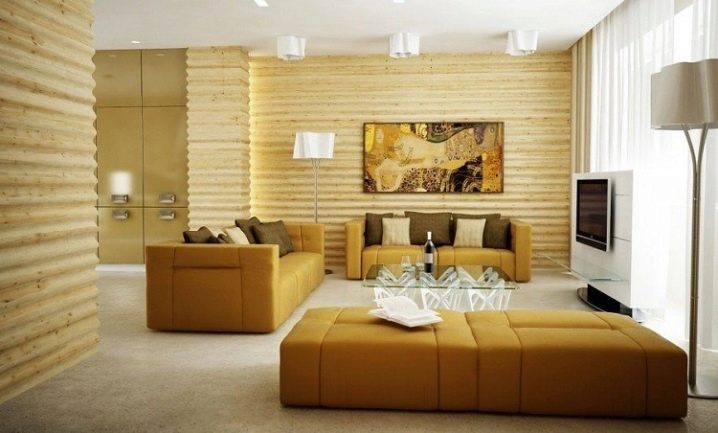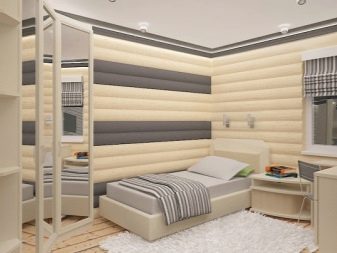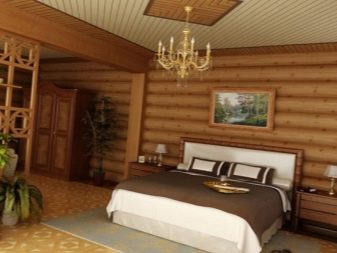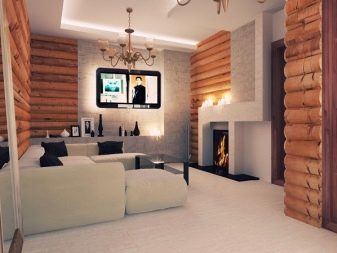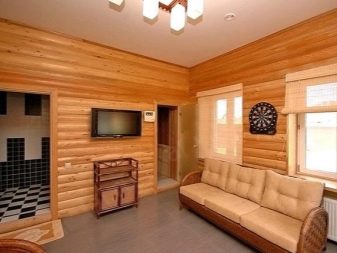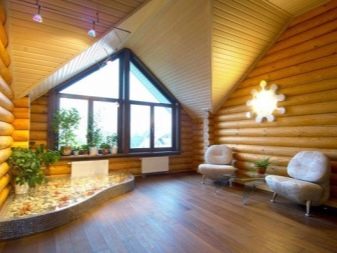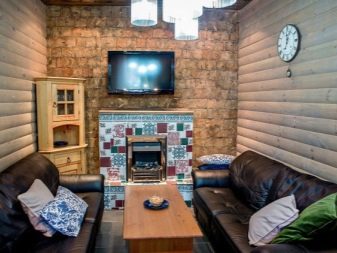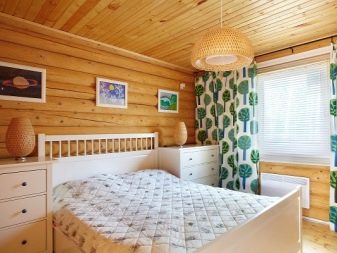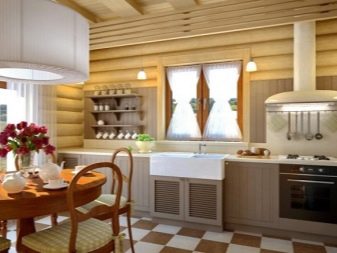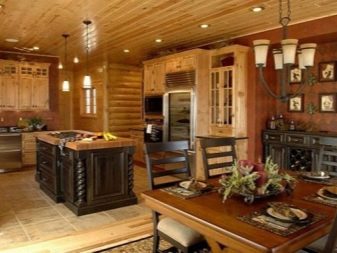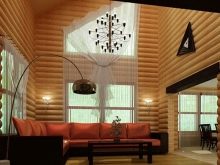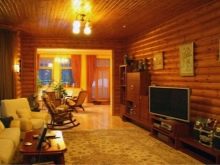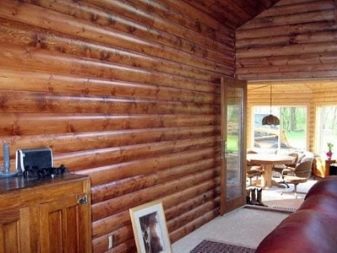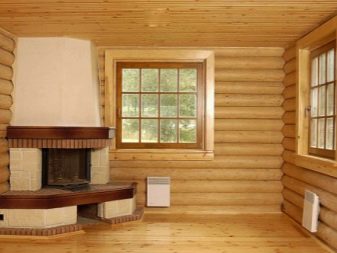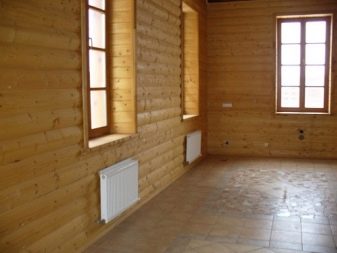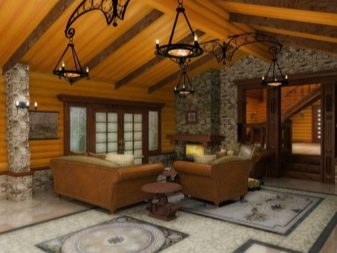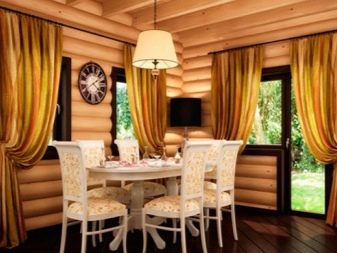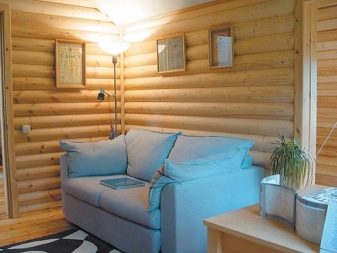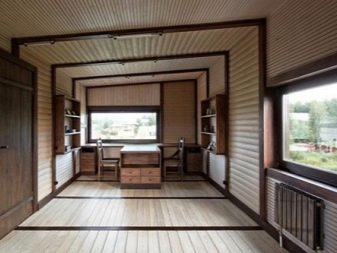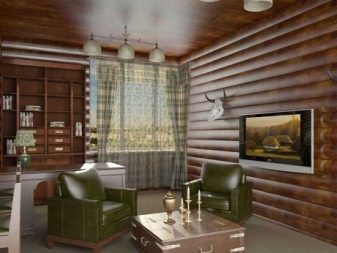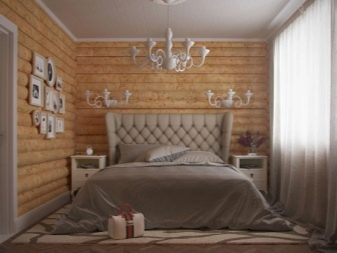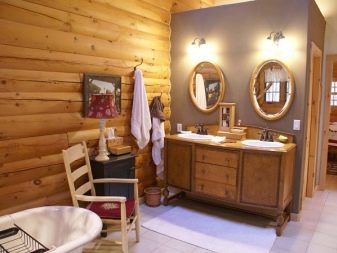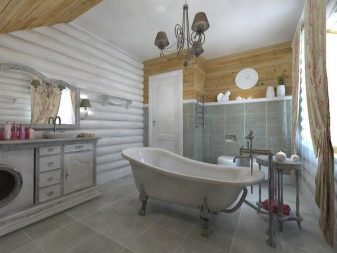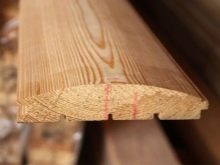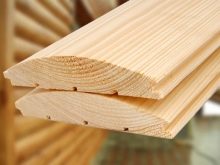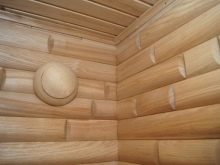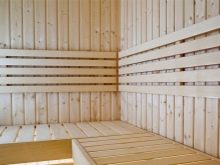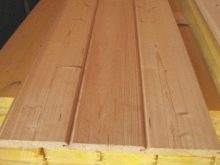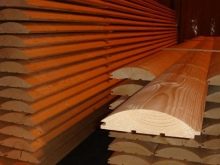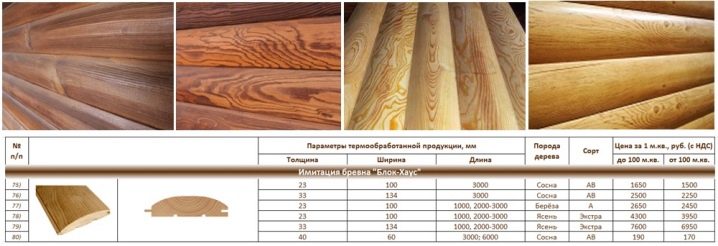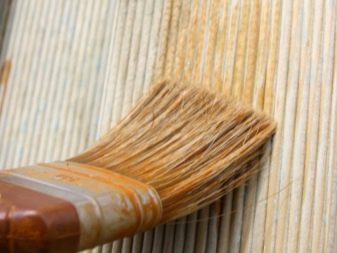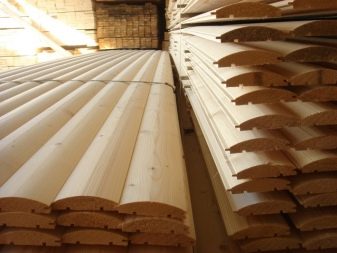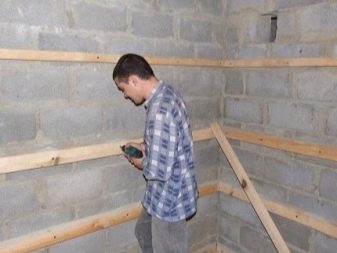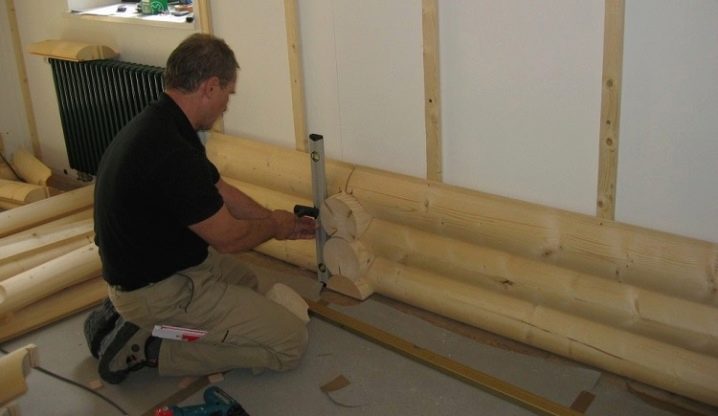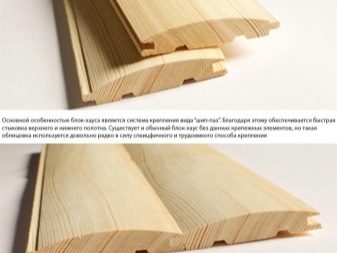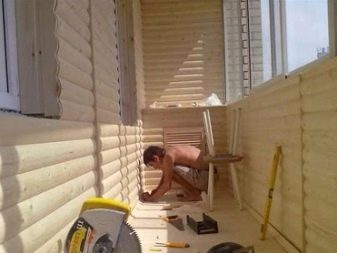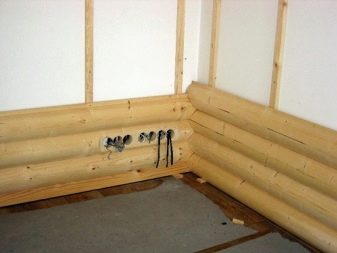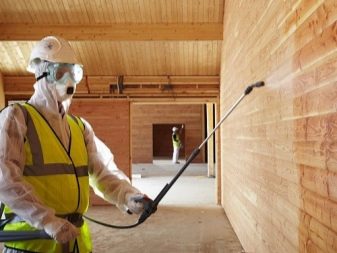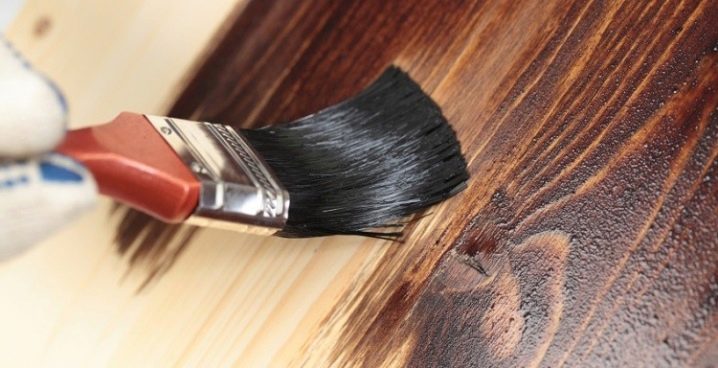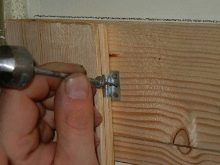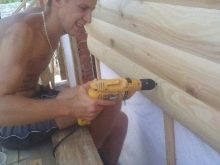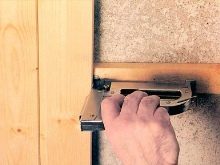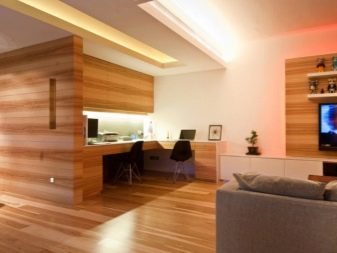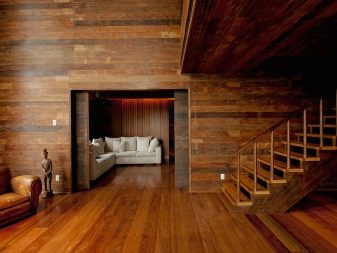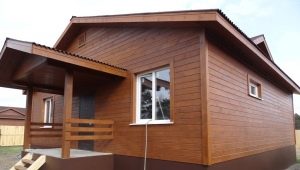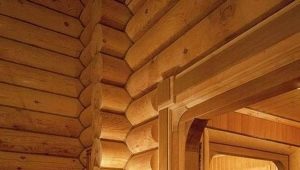Decorating a block house inside the house: design ideas
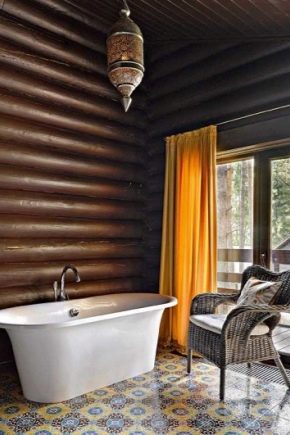
The interior, in which there is a tree, always looks unusual, noble and homely cozy. However, such a finish has long been associated with laboriousness. Fortunately, today there is a version of block-panel trimming, which can be installed without even having professional building skills.
Special features
The block house is a wooden material for exterior and interior plating. In some ways it is similar to clapboard - the same fixation system, the natural composition. However, the block house has a large size and simulates a natural timber or log. In the second case, the outer (facing inward) side has protuberances that look like the surface of a rounded log.
Sheathing block-house makes the room a special peace, respectability. Being a natural material, it has a beneficial effect on the microclimate in the room, pleasant to the touch.
Due to the variety of types, shades and textures, it is possible to realize the most unusual design decisions, achieving originality and originality of the interior.
The advantage of this type of plating is also the ability to hide small defects of the walls, since the block house is attached to the frame. The latter, by the way, allows you to create a gap between the wall and cladding, which can be laid insulation. In other words, it is possible to warm it at the same time as decorating a house.
However, natural wood in itself is a good insulation, and also has soundproofing characteristics.
The material has a small weight, which eliminates the additional strengthening of the walls and foundation, simplifies transportation and installation.
Like any natural wooden surface, blocking paneling requires regular maintenance.
In this case, it will maintain its attractive appearance for decades.
The combination of a block house with clapboard looks spectacular in the lining of the corridor; an original transition of lines and textures is obtained. For small areas, it is preferable to choose the material of light shades. However, both gray and golden brown will do.
Colors
The color of the block house is determined primarily by the material from which it is made. The most popular are light shades of a block house. So, pine panels have a sunny golden warm shade.
They are optimal for creating interiors in the Scandinavian style, for example, as well as for the kitchen.
A rich color palette is typical for products from oak. Depending on the mode of growth and the method of processing, the shade of wood varies from white (bleached oak) to almost black (stained).
Walnut looks noble and elegant in the interior. It has a rather dark pleasant chocolate shade, which becomes more saturated during the operation.
Another premium blockhouse option is beech wood. Its wood has an amazing pinkish shade of varying degrees of saturation - from powdery, closer to ivory, to brown with red reflections.
After installation, wooden surfaces can be coated with stain or varnish. They do not change the shade, but make the relief of the tree more expressive. But special paints can transform the surface.
Compositions are being produced today, after the application of which an ordinary inexpensive tree in its appearance begins to resemble expensive varieties.
Design solutions
Thin and lightweight block house is suitable for covering both a city apartment and a country house. Moreover, the latter does not necessarily have to have a massive foundation, the trimming of a frame house is a fairly frequent practice in private housing construction. Especially since there are plenty of ideas for plating.
It is not necessary to sheathe the whole room with a block house, it can be a certain zone. The material is well combined with stone, brick, tiled surfaces.
The block house can be combined with other wooden textures (board, clapboard), as well as delicate noble textiles. This warm natural material is harmoniously combined with wrought and glass elements.
A block house is the best option for recreating the atmosphere of a house in the Russian style - an expensive merchant or more concise, in some ways even ascetic peasant.Interior styles such as the chalet, the atmosphere of a small hunting lodge are also impossible without the use of wood.
The block house in this case is an affordable and convenient option.
Due to the environmental friendliness of the material, it can be used not only in the living room and corridor, but also in bedrooms, dining room and even children's rooms.
The sheathing of the block-house of the cabinet will add to it the rigor, respectability, emphasize the status and good taste of its owner. It is better to choose a material of a darker shade, combining it with furniture in tone, natural leather, original design elements.
For living rooms and bedrooms it is better to choose lighter options, perhaps a combination of several different types of block house. If panels are used for rounded logs, they will attract attention. In this case, furniture and accessories should have simple forms, be rather restrained.
Attractive in the living room looks like a combination of stone, wood and glass.
When finishing a block-house bathroom it can be turned into a luxurious boudoir. Usually light material is also used here. As an option - bleached wood.For more aristocracy, you can add dark "logs". Choosing such a variant of plating, it is necessary to thoroughly treat the wood with water-repellent compositions.
However, in this case, it will not last as long as in rooms with normal humidity.
Material selection
You can get an attractive and high-quality trim only if you choose the right material. For the interior decoration of rooms choose a block house from both coniferous and hardwood.
The first contain a large number of resins and essential oilsthat provides a natural antiseptic effect. In addition, they bring to the house a unique aroma of coniferous forest. Spruce with a large number of knots is usually used, which creates an interesting pattern. Pine pleases with an attractive amber-gold tint; a room decorated with such material looks warm and cozy.
When choosing a coniferous block house, it should be remembered that it is not suitable for rooms with high temperatures (bath, sauna, steam room), since as the temperature rises, the release of resin begins. When heated, it can cause burns.
Hardwood is no less popular. It is necessary to choose its varieties that demonstrate strength, resistance to rotting, warping. These include oak, aspen, linden.
But the use of birch is better to refuse.
As for the appearance, the block house can imitate a bar or log. The first section forms a square, the second - a circle. The block house under the log allows you to imitate the surface of natural log walls and looks very original.
For interior decoration, panels with a width of about 8-10 cm are usually selected, while for exterior plating there is a wider option, that is, 20 cm. However, this is not an obligatory rule, and if necessary, you can also choose a wide block house for the room. .
The standard length of the material ranges from 2-6 m, should be selected on the basis of ease of installation and design features. So, with the help of long and thin light strips, you can visually make the room larger. The cost of material depends on the length parameter - the longer the bar, the more expensive it is.
Regarding the thickness of the material, 2 cm will be enough for indoor use.In general, the slats can be 2-4.5 cm thick.
Having defined the dimensions and appearance of the panels, it is necessary to find out which class they belong to, since this largely determines the quality of the products.
Premium quality is different panels belonging to the class "Extra". They have no knots and internal pockets, cut exclusively from the middle of the trunk. As a rule, such finishing is applied in elite premises, and its cost is high.
A class A and B panels demonstrate fairly high quality. They have a small number of knots, blackouts, but they are suitable for decoration, look neat and noble, and have a more affordable price.
There is also material of class C, which is unsuitable for use as a finishing material.
The quality block house on the inside has 2 longitudinal cuts, which are necessary to protect the panels from deformation.
Step by step instructions for finishing
To work you need to prepare the necessary tools and materials. The latter must be immediately purchased in the required quantity (and even with a small margin), since the products of different batches may differ in appearance.
Before using wooden elements, they must be given time to rest in room conditions for 2-3 days., especially if there is a large temperature difference outside the window and in the room.
Before use, wooden building materials are usually impregnated with fire retardants and antiseptics to increase their durability. The entire installation process can be divided into stages.
Training
The block house is mounted on a wooden crate, which is assembled from bars. The distance between them is 45-50 cm. At the same time, during the installation of the frame, measurements should be taken regularly - somewhere it is necessary to remove the excess height of the bar, while in other areas a substrate is required. Fastening the frame by using screws.
Features of the skin allow simultaneously with this process to make the house warm from the inside. Despite the fact that this method is not recommended by professional builders, sometimes it is only in this way that the thermal efficiency of the object can be improved. In this case, a layer of vapor barrier and insulation is laid between the lags of the batten.
Self install
Having completed the installation of the frame, you can proceed to fixing the block-house, using screws or clamps as fasteners.
Previously in the bars need to make holes corresponding to the entry points and the diameter of the screws.
Correctly install the block-house on top, the first board is put a thorn up. It is fastened only with screws, and already subsequent panels first snap onto it, and only then are additionally fixed with screws. Thus all surfaces should be sheathed.
When installing the cladding panels with your own hands, it is important to remember to leave a gap of 5 mm on the edge between the ceiling and the wall, the wall and the floor. These clearances provide ventilation for the system.
The casing as a whole does not require professional building skills, because each panel has a thorn-groove fastening. First, the panel must be fixed to the corresponding groove (holding it under the inclination of 45 degrees) of the previous element, and then fixed with screws.
Docking
Docking corners, at first glance, may seem complicated, but this is not quite true. You can produce it using special angles (a simpler option, but requires the purchase of additional elements) or by making cuts at the ends of the panels at an angle of 45 degrees.
In the first case, it is necessary to guide the ends of the boards into the outer or inner corner. After that, you can assemble the remaining wall panels, and then fix the ceiling and floor baseboards. In the second case, it is important to dock the boards of perpendicular walls in much the same way as when wallpapering is glued.
Painting
The final stage (as well as preparation for further painting the surface) is grinding. For this, it is more convenient to use the grinder, first with a larger grain, and then fine sandpaper.
The next stage is the application of antiseptics and flame retardants. Despite the fact that before installing the material has already been impregnated with these compounds, it is this technology that guarantees an increase in the fire resistance and bio-resistance of wood.
To make the surface glossy or matte gloss, as well as to protect the surface, you can use wood stain or special varnishes. They emphasize the texture of wood, without changing its color. To give the surfaces a different color and even to achieve imitation of more expensive wood species, special paints allow. Paint the surface can be roller, and in hard to reach places (in the corners) - with a brush.
Useful tips from the pros
As already mentioned, the methods of fixing a block-house can be different - it can be mounted on the clamps, metal brackets or screws. The main thing is that all metal elements should have a corrosion-resistant coating.
As vapor barrier, it is permissible to use izospan or its analogs. In the role of insulation may be mineral wool or penofol. It is better to refuse use of polystyrene foam insulation.
If there is a desire to trim the inner surface of a tree, the use of a block house made of wood is not the only option. Today vinyl and polymeric materials are produced, imitating a wooden beam or log as closely as possible.
For how to make a neat inner corner of the block-house, see the video.
